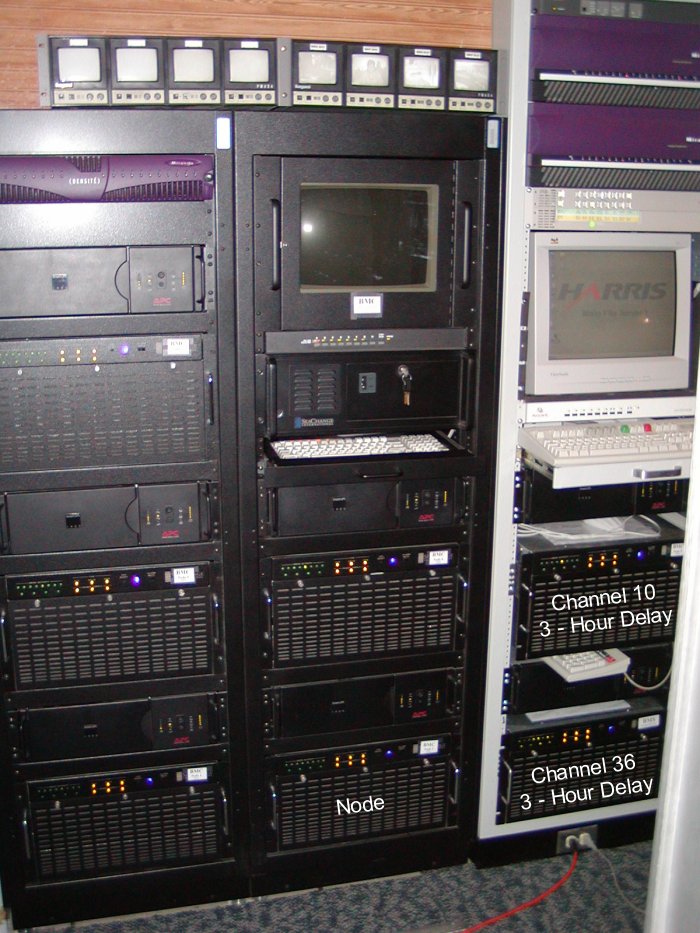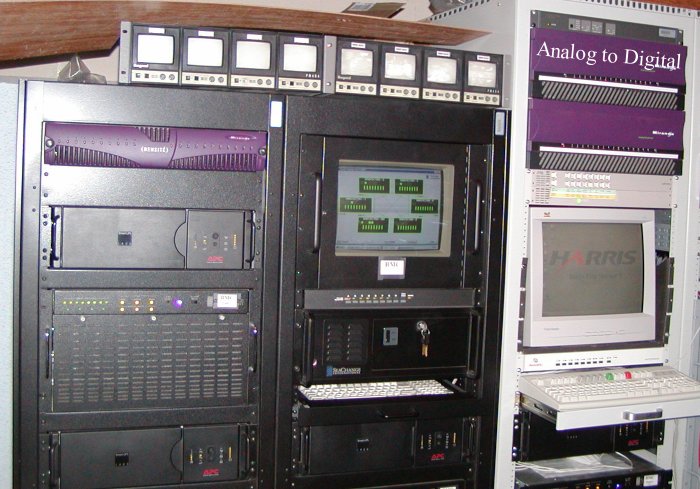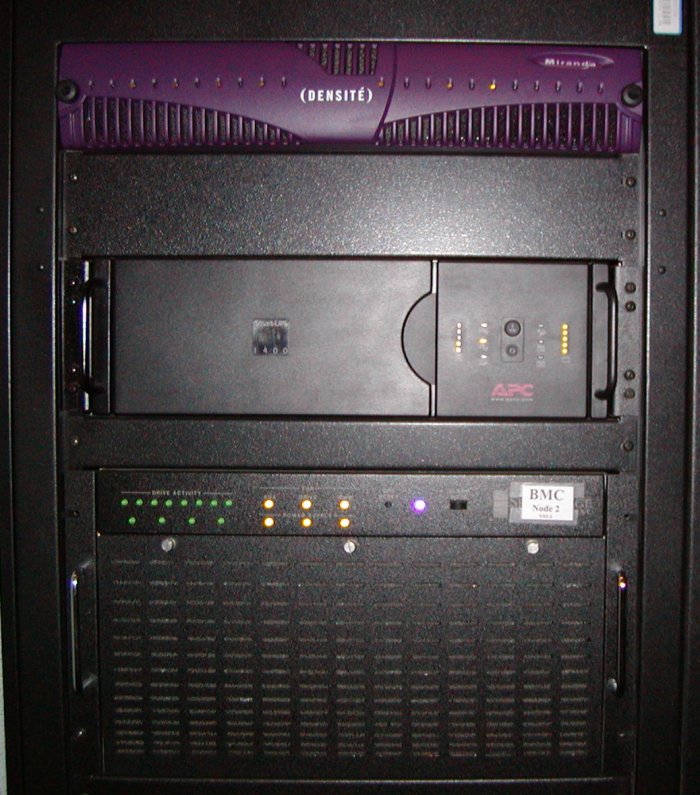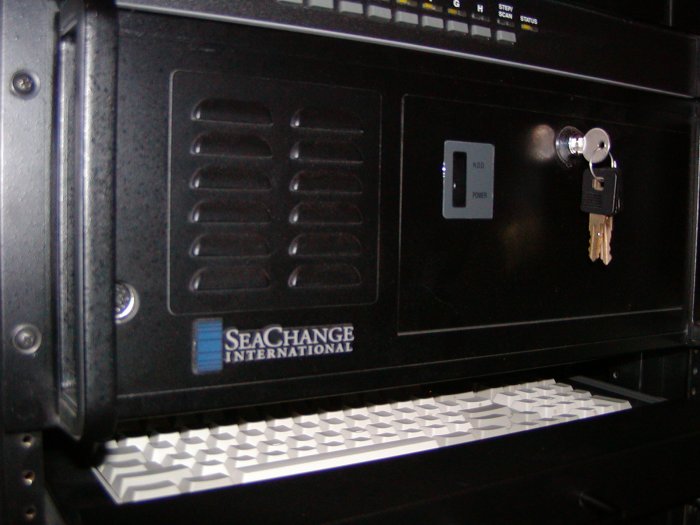

Seachange SD Video storage sever BMC-850 with has 6.25 Terabytes of storage, about 1560 hours of video. The storage unit consists of five nodes with eight 200 Gigabytes hard drives per node in a raid array.
RAID redundant array is used to store data over multiple hard drives in a system called stripping where if one hard drive was lost, the data can be recovered through a rebuilding process extracting data from the remaining drives.
The analog video is received from a satellite feed in NTSC format then digitized and stored on the hard drives. The Miranda is the analog to digital converter (A/D converter) used for digitizing the video source. It uses EIA 601 using 8 mb/s 4.2.2. When the video is needed to be aired, the video storage unit retrieves the data, converts it back to analogue video format to be transmitted.
Seachange can record two video sources per node at one time. It can output two video feeds per node. One output is feed through the router into Channel 10 for live broadcast and another output is for Channel 36.
The single node seachange BMC-1230 stores three hours of video from channel 10 & 36 at 12mb/s. It has 90 Gigabytes of storage. The three hour delay is fed to Warner cable and Channel 10 Digital service's; Channel 10 -1, 10 - 2 (Channel 8.)


The picture above shows one node with its UPS power supply above it. The purple device on top is the distribution amp made by Maranda.
